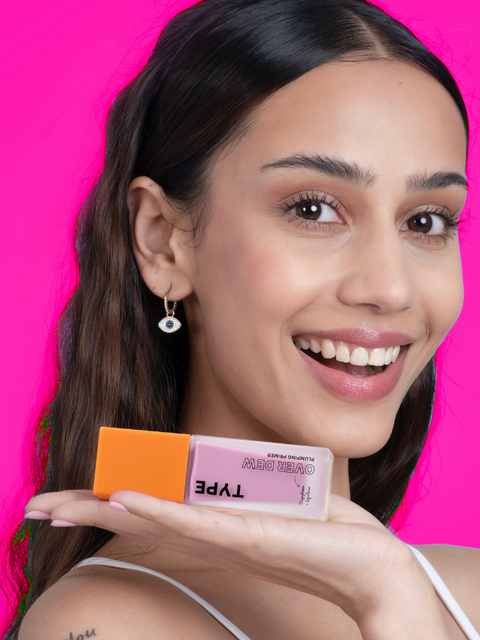
Moisturizing Primer vs. Regular Primer: Which is Right for You?
Regular primers instead focus more on creating a matte or pore-minimizing finish with ingredients like silicones or powders.
Excellent for controlling shine and filling in pores, regular primers extend the wear time of your makeup.

Suitability for different skin types
Moisturizing primers are ideal for dry or combination skin.
Regular primers however, work best for oily or combination skin to control excess oil and create a long-lasting matte finish.
Understand these key differences and choose a primer that aligns perfectly with your skin's needs and makeup preferences.
Application and Effectiveness
When it comes to applying moisturizing primers versus regular primers, the process is quite similar. Both are applied after your skincare routine and before your foundation.
Using your fingertips or a makeup sponge, gently massage a small amount of the primer onto your face, focusing on areas where your makeup tends to fade or where you have dry patches.
Both moisturizing and regular primers are effective at extending the wear of your makeup.
Moisturizing primers, however, have the added benefit of providing extra hydration to your skin, making them an excellent choice for those with dry or dehydrated skin.
Regular primers are fantastic for creating a smooth canvas for makeup application, blurring imperfections, and controlling excess oil.
How to Choose The Right Primer For You?
When selecting the perfect primer for your makeup routine, it's essential to consider your skin type, specific concerns, and makeup preferences.
For those with dry skin, a moisturizing primer can provide that extra hydration your skin craves, creating a smooth canvas for makeup application while keeping your skin moisturized throughout the day.
If you have oily skin or prefer a matte finish, a regular primer can help control shine and keep your makeup in place for hours on end.
But why choose just one when you can mix and match to create a customized solution?
For combination skin types, you might benefit from using a moisturizing primer on dry areas and a regular primer on oilier zones for balanced results. Experimenting with different combinations can help you achieve the perfect balance of hydration and staying power for your makeup look.
Understanding your skin's needs and experimenting with different primer combinations, will help you tailor your makeup routine to suit your individual preferences and create a flawless base that enhances the longevity and appearance of your makeup.
Final Thoughts
After weighing the benefits of both moisturizing and regular primers, it's clear that the choice really comes down to personal preference and individual needs.
If you have dry skin or are looking to achieve a luminous complexion, a moisturizing primer may be the perfect fit for you. It will hydrate your skin, smooth out any fine lines, and create a flawless base for your makeup application.
On the other hand, if you have oily skin or prefer a matte finish, a regular primer may be more suitable for your needs. Helping control excess oil, minimizing the appearance of pores, and ensuring your makeup lasts all day without any unwanted shine.
Ultimately, the key is to experiment and find what works best for your unique skin type and makeup goals. You may even consider mixing and matching different primers to create a customized solution that addresses all your concerns.
But remember, whether you opt for a moisturizing primer, a regular primer, or a combination of both, the most important thing is to feel confident and comfortable in your own skin!

Comments (0)
There are no comments for this article. Be the first one to leave a message!